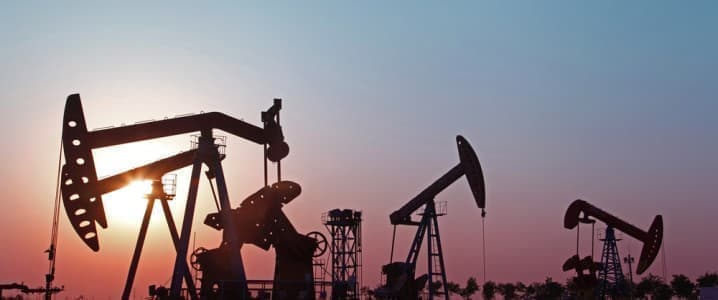Business
Global Oil Consumption Hits Record 101.8 Million Barrels Daily

Global oil consumption reached a historic peak of 101.8 million barrels per day (bpd) in 2024, according to the latest report from the Energy Institute, published in collaboration with KPMG and Kearney. This figure represents a modest increase of 0.7% from the previous year, reflecting ongoing shifts in global energy dynamics influenced by geopolitics, economic recovery, and long-term energy security considerations.
Interplay of Demand and Production
The report highlights that while global oil production remained stable, significant changes are shaping the landscape. The United States continues to lead as the largest oil consumer, accounting for 18.7% of global demand. However, U.S. daily consumption fell slightly from 2023, despite a decade-long average increase of 0.5% each year. In contrast, China, the second-largest consumer, saw a 1.2% decline in daily consumption to 16.4 million bpd, a stark difference from its average growth rate of 4% over the past ten years. This suggests a potential plateau in China’s oil demand as the country shifts towards electrification of transportation amidst slowing economic growth.
On the other hand, India’s oil consumption surged by 3.1% year-over-year, reaching 5.6 million bpd. The country’s robust economic expansion and a growing middle class are driving this increase, positioning India to potentially become the third-largest oil consumer globally in the near future.
Production Trends and Global Reserves
Global oil production, including natural gas liquids, hit a record 96.9 million bpd, surpassing pre-pandemic levels by 1.8 million bpd. The United States remains at the forefront with 20.1 million bpd, although this includes substantial amounts of natural gas liquids that are not typically used as transportation fuels. When focusing solely on crude oil and condensate, U.S. production stands at 13.2 million bpd, indicating a 2% increase from 2023, yet this growth is slowing compared to the previous decade’s average of 4.2%.
Russia and Saudi Arabia follow with production figures of 10.2 million bpd and 9.2 million bpd, respectively. Russia’s output has decreased by 3.1% due to Western sanctions, although its exports to China and India remain strong. Saudi Arabia’s production represents its lowest level since 2011, reflecting both voluntary cuts and concerns over the Kingdom’s long-term capacity amid heavy domestic investment.
The report also notes that as of 2020, the world’s proven oil reserves stood at 1.7 trillion barrels, sufficient to sustain current production for approximately 53.5 years. However, the distribution of these reserves is uneven, with Venezuela holding the largest amount at 304 billion barrels, followed closely by Saudi Arabia at 298 billion barrels and Iran at 158 billion barrels. The United States has 69 billion barrels, reflecting a mature production base.
As 2024 unfolds, the oil market is characterized by a precarious balance between production and consumption. While price volatility remains contained, factors influencing this stability, such as OPEC+ coordination and U.S. shale production resilience, are vulnerable to disruption. The report underscores the significance of oil in the global economy, where developing nations are increasing their demand and production remains concentrated among a few key players.
Looking forward, questions surrounding energy security, inflation, and global trade will continue to emerge as oil remains a central figure in the ongoing transition towards alternative energy sources. The upcoming editions of the Statistical Review will delve deeper into trends concerning natural gas, renewables, coal, and nuclear power, highlighting the enduring relevance of oil in both economic and geopolitical contexts.
-

 World5 months ago
World5 months agoSBI Announces QIP Floor Price at ₹811.05 Per Share
-

 Lifestyle5 months ago
Lifestyle5 months agoCept Unveils ₹3.1 Crore Urban Mobility Plan for Sustainable Growth
-

 Science5 months ago
Science5 months agoNew Blood Group Discovered in South Indian Woman at Rotary Centre
-

 World5 months ago
World5 months agoTorrential Rains Cause Flash Flooding in New York and New Jersey
-

 Top Stories5 months ago
Top Stories5 months agoKonkani Cultural Organisation to Host Pearl Jubilee in Abu Dhabi
-

 Science5 months ago
Science5 months agoNothing Headphone 1 Review: A Bold Contender in Audio Design
-

 Sports5 months ago
Sports5 months agoBroad Advocates for Bowling Change Ahead of Final Test Against India
-

 Top Stories5 months ago
Top Stories5 months agoAir India Crash Investigation Highlights Boeing Fuel Switch Concerns
-

 Business5 months ago
Business5 months agoIndian Stock Market Rebounds: Sensex and Nifty Rise After Four-Day Decline
-

 Sports5 months ago
Sports5 months agoCristian Totti Retires at 19: Pressure of Fame Takes Toll
-

 Politics5 months ago
Politics5 months agoAbandoned Doberman Finds New Home After Journey to Prague
-

 Top Stories5 months ago
Top Stories5 months agoPatna Bank Manager Abhishek Varun Found Dead in Well









